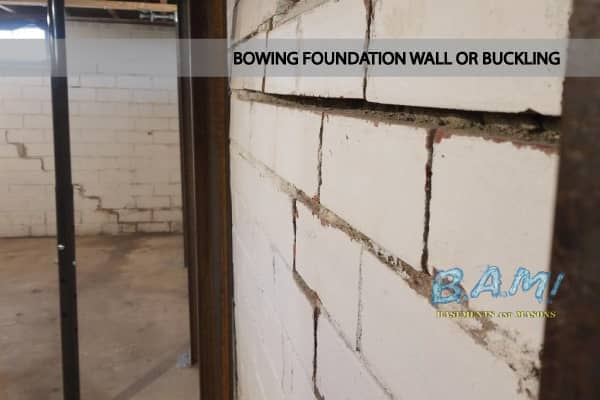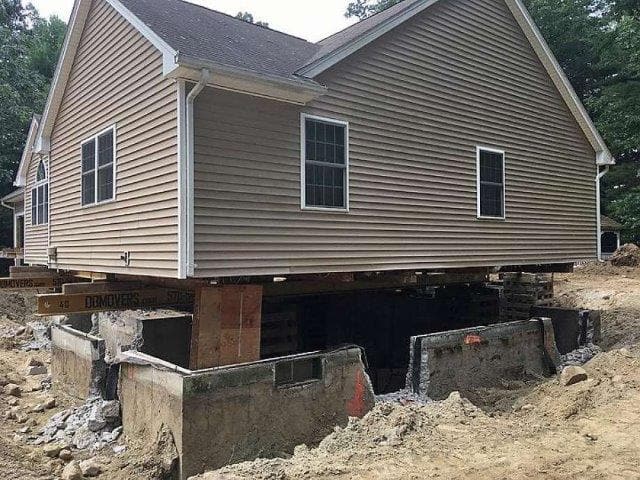The Main Principles Of Best Basement Waterproofing
The Main Principles Of Best Basement Waterproofing
Blog Article
Some Known Factual Statements About Best Basement Waterproofing
Table of ContentsThe Single Strategy To Use For Best Basement WaterproofingThe Single Strategy To Use For Best Basement WaterproofingThe 30-Second Trick For Best Basement WaterproofingThe Ultimate Guide To Best Basement WaterproofingNot known Incorrect Statements About Best Basement Waterproofing
usages excavation strategies toward all-time low of the structure's structure. involves removing dampness after it has gone into the cellar. AdvantaClean's qualified professionals and specialists will situate the water source. If wall surface or slab splits are existing, we will infuse polyurethane and epoxies into the fractures and seal the concession, stopping more dampness from getting in.Correct grading around the home to direct moisture far from the framework. Putting up, repairing, or cleansing gutters and downspouts. Interior or external waterproofing with filler, sealant, and/or water resistant paint. Setting up cellar ventilation systems, conditioning systems, or basement dehumidifier systems to get water out of your basement. Choosing AdvantaClean's basement waterproofing services is a reliable method to deal with dampness and stop mold from endangering the framework of your home and the health of your household.
If there's condensation on the outside of the aluminum foil, you have high moisture in your basement. If the aluminum foil has condensation on the within surface area (following to the wall), the soil around your residence might be normally damp from a high water table or poor dirt water drainage.
You can waterproof simply your interior walls, which may address the issue. Once they dry out, they adhere permanently to concrete and stonework walls.
The 7-Second Trick For Best Basement Waterproofing
Swirl the brush at the last phase of application to provide the wall an attractive, completed appearance. Concrete water resistant finishings can't be related to previously painted surfaces; check the label. A 5-gallon container expenses about $60. Understood as densifiers, they are suitable just for wall surfaces that have not been painted or secured.
Yet you brush, roll, or spray it on a lot more heavily one gallon covers just 75 square feet, not the 300 square feet typical with typical paint. Water resistant paint is great for DIY application. You can use it over painted surfaces, and paint over it once it's cured (one gallon costs $37).
It can set you back $10,000 to $15,000, depending upon the work required. Outside waterproofing includes excavating all around the home fully depth of the structure walls, then mounting a waterproof finishing or membrane layer topped by water drainage panels. The panels give a very easy path for water to stream down to an outside French drain at the end of your structure.
See This Report about Best Basement Waterproofing
A basement without waterproofing is kind of like that. Your cellar doesn't desire to go through a downpour without proper protection simply as much as you don't want to.

Outside waterproofing is a waterproofing method that includes securing your home from the outside. It's sort of like a moat around a castle. It entails digging a trench around your whole home down to the structure (concerning 8 to 10 feet down). The foundation walls are then cleansed, sealed, and covered with a water resistant membrane layer or sealer.

Getting My Best Basement Waterproofing To Work
It's an extra engaged procedure that needs digging up your backyard, which is costly and taxing. Exterior waterproofing entails eliminating whatever surrounding the house, consisting of verandas, driveways, sidewalks, landscape design, a/c units, decks, and so on. If any of the job was done improperly and water is still entering your basement, there isn't much you can do to correct or fix it.
Inside cellar waterproofing involves waterproofing from the within. Any water that leaks into your cellar is redirected before it touches your flooring. It's sort of like using a raincoat under your garments. It includes two things: a water drainage track and a sump pump. It works by securing the within of your cellar walls and floors so water that attempts to go into is anchor carried out via a sump pump.
It's an effective approach to waterproof your basement. The downside of interior basement waterproofing mainly has to do with the setup process.
Excitement About Best Basement Waterproofing
To conclude, outside and Read Full Report indoor cellar waterproofing are both effective techniques of protecting your home from water damages. Exterior waterproofing produces a barrier that prevents water from entering your home, while interior waterproofing reroutes water that does enter your home. And it is essential to keep in mind that outside waterproofing is a costly and disruptive installment procedure when contrasted to indoor waterproofing.
Whichever method you pick, make sure you select a dependable and trustworthy specialist for the job. If you have any kind of questions regarding cellar waterproofing, please reach out to us.
You can fill up out our kind below. Best Basement Waterproofing, start a chat in the bottom right-hand edge, or call us at 1-800-827-0702
Report this page